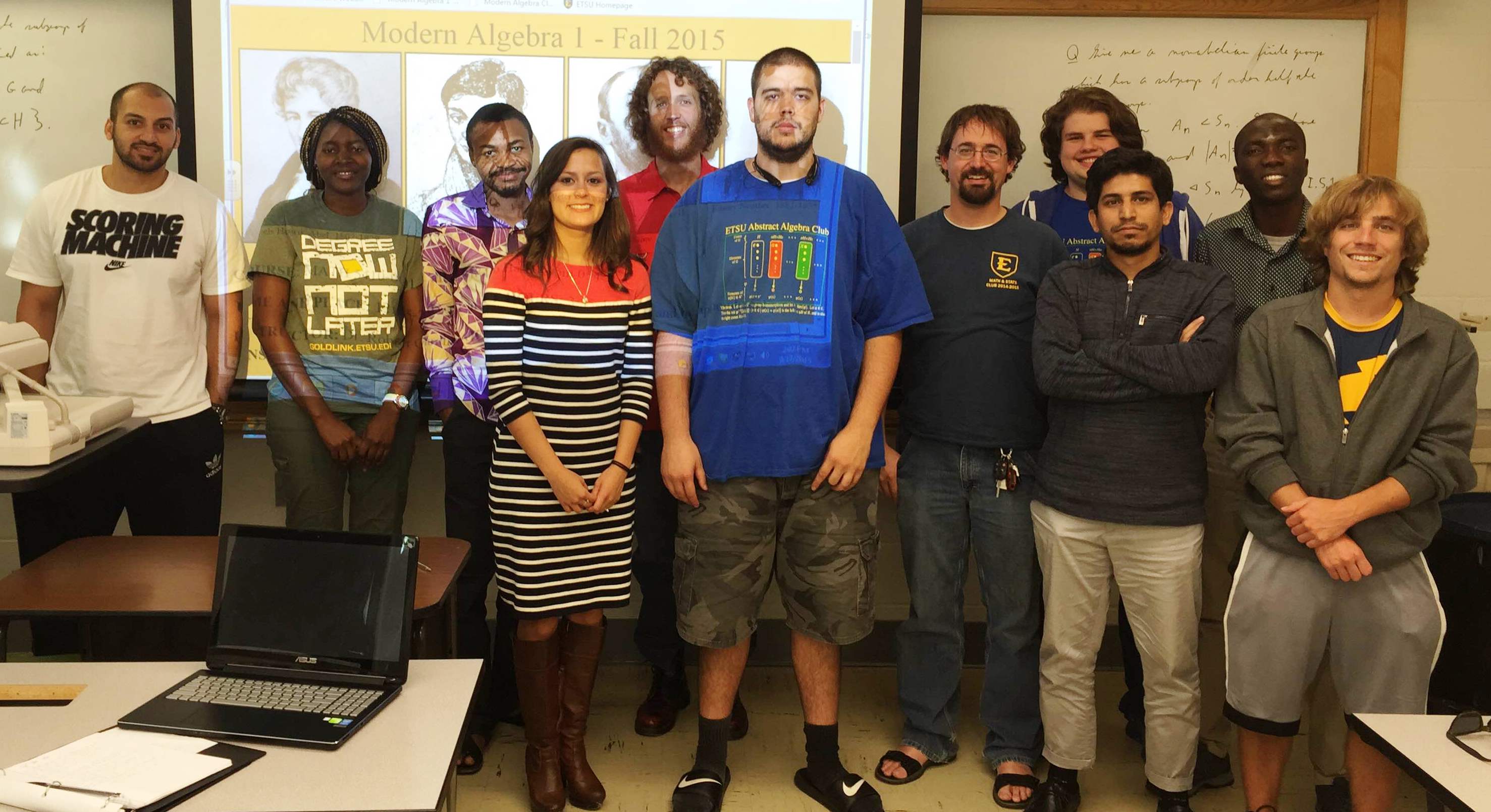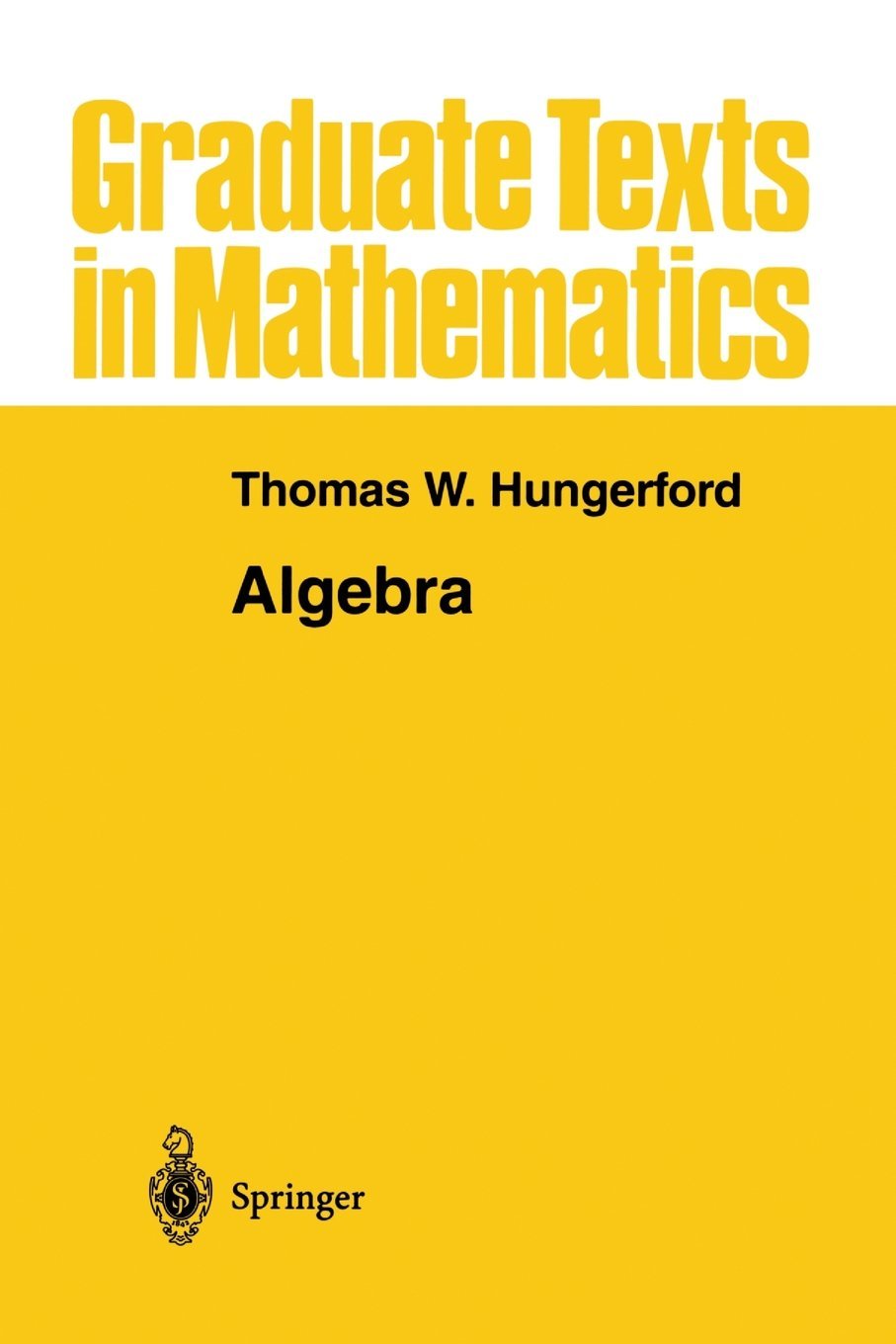 Niels Henrik Abel, 1802-1829 |
 Evariste Galois, 1811-1832 |
 Peter Ludwig Sylow, 1832-1918 |
 Emmy Noether, 1882-1935 |
 Niels Henrik Abel, 1802-1829 |
 Evariste Galois, 1811-1832 |
 Peter Ludwig Sylow, 1832-1918 |
 Emmy Noether, 1882-1935 |

COURSE: MATH 5410-001, Call # 84841
TIME AND PLACE: 12:45-2:05 TR in Lamb Hall, Room 054
INSTRUCTOR: Dr. Robert Gardner OFFICE HOURS: 3:35-4:00 TR and by appointment
OFFICE: Room 308F of Gilbreath Hall
PHONE: 439-6979 (308F Gilbreath), Math Department Office 439-4349
E-MAIL:gardnerr@etsu.edu
WEBPAGE: http://faculty.etsu.edu/gardnerr/gardner.htm
(see my webpage for a copy of this course syllabus, copies of the classnotes in PDF, and updates for the course).
TEXT: Algebra, by Thomas W. Hungerford (1974).

CLASS NOTES: We will use projected digital notes for the component of the lecture consisting of definitions, statements of theorems, and some examples. Proofs of the vast majority of theorems, propositions, lemmas, and corollaries are available and in Beamer presentations and will be presented in class as time permits. The white board for marginal notes and additional examples and explanation. Copies of the notes are online at: http://faculty.etsu.edu/gardnerr/5410/notes-groups.htm and http://faculty.etsu.edu/gardnerr/5410/notes-rings.htm It is strongly recommended that you get printed copies of the overheads before the material is covered in class. This will save you from writing down most notes in class and you can concentrate on listening and supplementing the notes with comments which you find relevant. You should read the online notes to be covered in class before each class (we may not have class time to cover every little detail in the online notes). Try to understand the definitions, the examples, and the meanings of the theorems. After each class, you should read the section of the book covered in that class, paying particular attention to examples and proofs.
ADDITIONAL REFERENCES:
A First Course in Abstract Algebra, 7th Edition, John B. Fraleigh, NY: Addison-Wesley, 2003.
Abstract Algebra, 3rd Edition, David S. Dummit and Richard M. Foote, Hoboken, NJ: John Wiley and Sons, 2004.
Visual Group Theory by Nathan Carter, New York: Mathematical Association of America, 2009. I will use this resource for some motivational and geometric examples.
A History of Abstract Algebra, by Isreal Kleiner, Boston: Birkhauser, 2007. As time permits, I will insert some historical comments and this is be a reliable source of such information.
PREREQUISITE: As the ETSU catalog states, the prerequisite for this class is Introduction to Modern Algebra (MATH 4127/5127).
HOMEWORK: YOU MUST SHOW ALL DETAILS ON THE HOMEWORK PROBLEMS!!! Justify every step and claim you make - this is how you convince me that you know what you are doing. You may find some answers online, but these rarely sufficiently justify all steps and are unacceptable as homework solutions.
ACADEMIC MISCONDUCT: While I suspect that you may work with each other on the homework problems (in fact, I encourage you to), I expect that the work you turn in is your own and that you understand it. Some of the homework problems are fairly standard for this class, and you may find proofs online or in an online version of the solutions manual. The online proofs may not be done with the notation, definitions, and specific methods which we are developing and, therefore, are not acceptable for this class. If I get homework from two (or more) of you that is virtually identical, then neither of you will get any credit. If you copy homework solutions from an online source, then you will get no credit. These are examples of plagiarism and I will have to act on this as spelled out on ETSU's "Academic Integrity @ ETSU" webpage: http://www.etsu.edu/academicintegrity/faculty.aspx (last accessed 7/21/2013). To avoid this, do not copy homework and turn it in as your own!!! Even if you collaborate with someone, if you write the homework problems out in such a way that you understand all of the little steps and details, then it will be unique and your own work.
GRADING: Homework (H) to be turned in will be assigned regularly. We will have two tests (T1 and T2) and your average will be computed as follows:
DESIRE2LEARN: I will not rely on the Desire2Learn ("elearn") website. Instead, I will simply post all material directly on the internet. However, I will post your homework grades on D2L.
SYLLABUS ATTACHMENT: You can find an on-line version of the university's syllabus attachment (which contains general information concerning advisement, honor codes, dropping, etc.) at: http://www.etsu.edu/reg/documents/PDF/Syllabus%20Attachment.pdf (last accessed 8/25/2015).
NOTE: When we compare the undergraduate and graduate analysis sequences, we see that the material covered in the graduate class consists mostly of generalizations of the undergraduate material (for example, the undergraduate class covers Riemann integration and the graduate class covers Lebesgue measure and Lebesgue integration). This is not the case for the undergraduate and graduate algebra sequences, however. In Introduction to Modern Algebra 1 and 2 (MATH 4127/5127, MATH 4137/5137) you are introduced to the structures of modern algebra (groups, rings, fields, quotient groups, ideals, extension fields, algebraically closed fields, solvable polynomial equations). You elaborate on these structures with many examples and state numerous theorems which illustrate the properties and relations between them. However, there is only enough time to prove a limited number of the results. In this graduate sequence, we assume a familiarity with the structures discussed and go into more depth and many more proofs. The goal of Modern Algebra 1 is to cover all of the material on groups and some of the material on rings. In Modern Algebra 2, we will finish the material on rings, lightly touch on modules, and spend the majority of our time on fields. The two main goals of the Modern Algebra sequence are to give a proof (which is as "algebraic" as possible) of the Fundamental Theorem of Algebra (in Section V.3) and to prove the insolvability of the quintic (in Section V.9).
IMPORTANT DATES: (see http://www.etsu.edu/etsu/academicdates.aspx for the official ETSU calendar; accessed 2/8/2015):
Our tentative schedule for the year is as follows:
| |
|
| |
||||
I.4. Cosets and Counting |
3 |
|||
I.5 Normality, Quotient Groups, and Homomorphisms |
1, 6, 7, Bonus: 10 |
|||
I.6 Symmetric, Altternating, and Dihedral Groups |
5, 6, 9 |
|||
II.7. Nilpotent and Solvable Groups |
8(a),(b) |
|||
Return to
Bob Gardner's home page
Last updated: December 2, 2015.